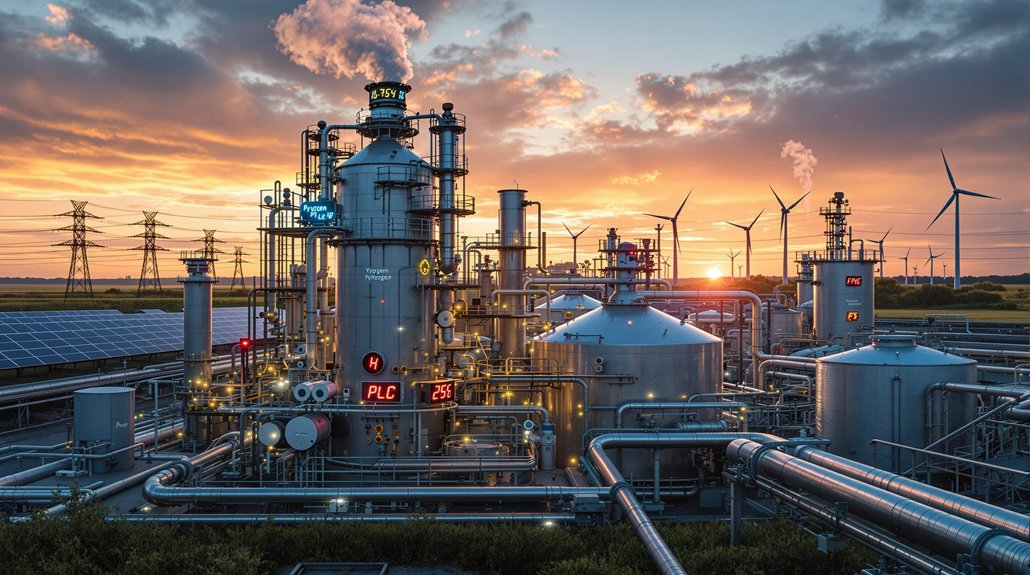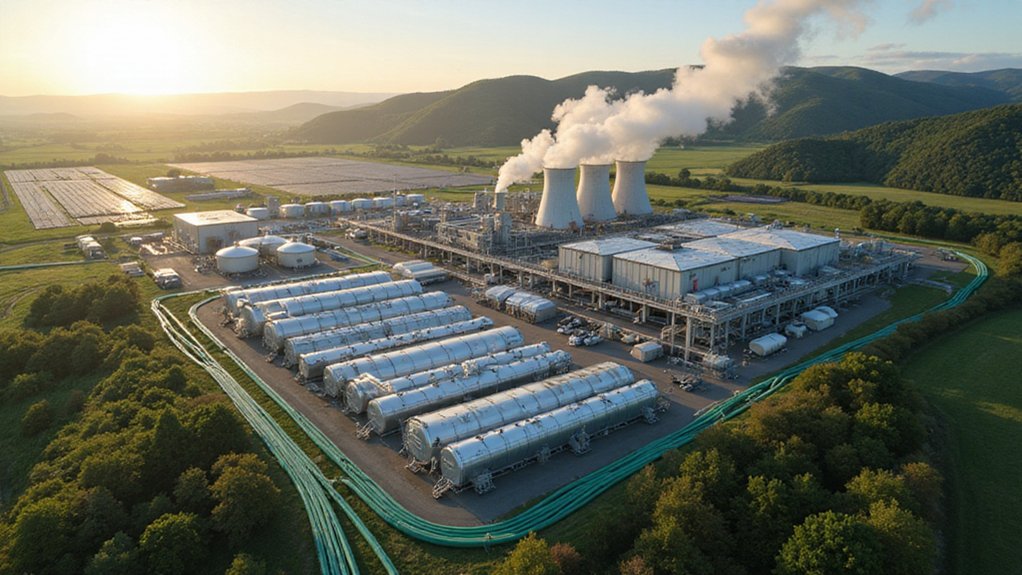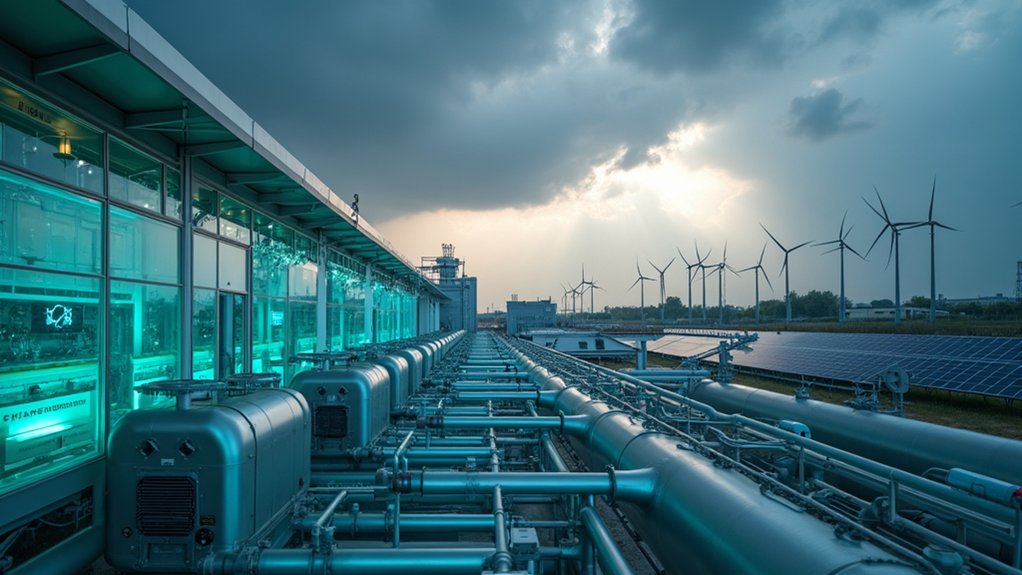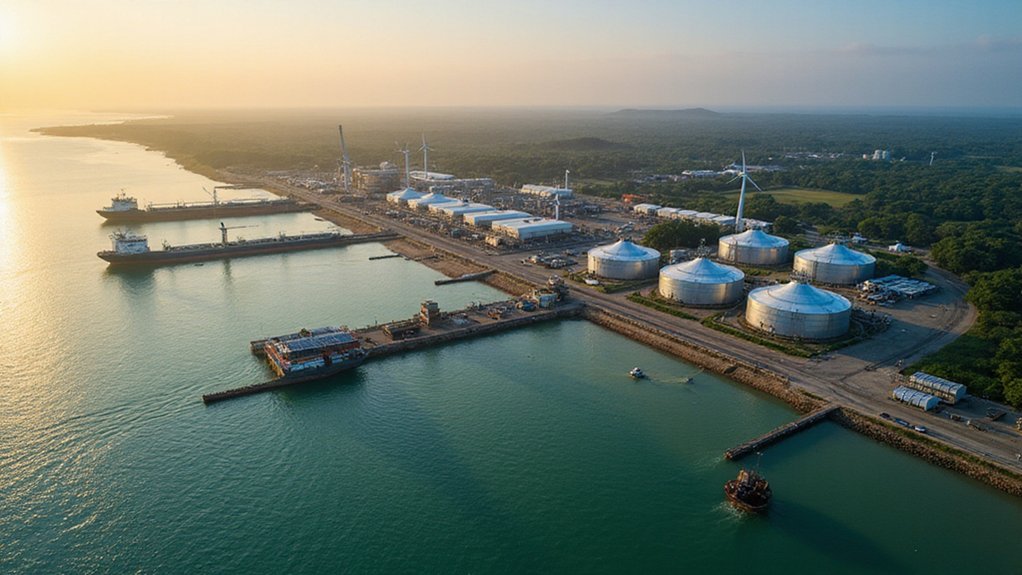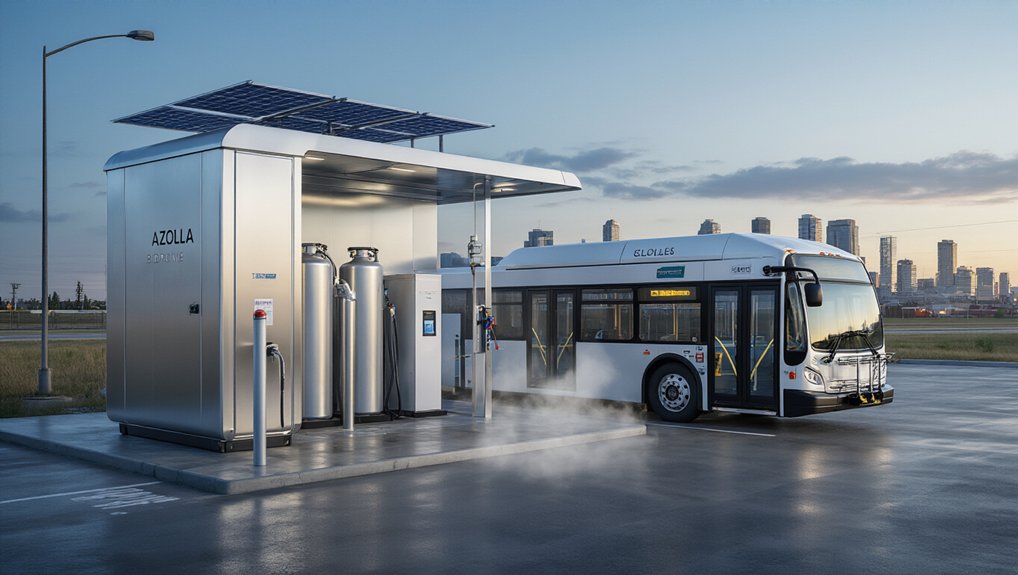The “green hydrogen fallacy” refers to the misconception that excess renewable energy will make hydrogen production cheap. In reality, multiple factors limit cost reduction. Green hydrogen suffers from low efficiency (30-40% round-trip), high production costs (2-3 times fossil hydrogen), and massive infrastructure needs. Water requirements and land use present environmental challenges, while poor storage efficiency compounds issues. Battery technology and direct electrification offer more efficient alternatives in many applications. The economics simply don’t add up.
Enthusiasm for green hydrogen as a clean energy solution may be misplaced, according to recent analysis. The production of hydrogen using renewable electricity faces major efficiency problems. The process is only 70-80% efficient, with significant energy losses at every step. When hydrogen is converted back to electricity, efficiency drops even further, resulting in overall round-trip efficiency as low as 30-40%.
The costs remain prohibitively high. Green hydrogen production is 2-3 times more expensive than fossil fuel-derived hydrogen. By 2030, costs are expected to range from $2.50 to $6.80 per kilogram. Renewable electricity accounts for 60-70% of these costs. Even with dropping electrolyzer prices, large-scale facilities will be needed to make green hydrogen economically viable.
Infrastructure presents another major hurdle. There’s virtually no existing hydrogen transport network, and building one would be costly and time-consuming. Hydrogen causes steel pipelines to become brittle, requiring special materials. Compressing or liquefying hydrogen for transport reduces efficiency even more. The final distribution to end users is particularly challenging.
Green hydrogen’s applications are limited mainly to hard-to-electrify sectors like steel production, shipping, and aviation. For most uses, direct electrification is 2-14 times more energy-efficient. Using renewable power to produce hydrogen instead of feeding it directly to the grid is counterproductive. Smart grid technologies could enable much higher integration of renewable energy without the inefficiency of hydrogen conversion.
Green hydrogen makes sense only where direct electrification can’t reach, otherwise it wastes precious renewable energy.
Environmental benefits aren’t clear-cut either. Hydrogen leaks at rates of 1-3%, acting as an indirect greenhouse gas. Each kilogram of hydrogen requires 9 kilograms of water. Despite some industry claims, hydrogen production is less water-efficient than many alternative energy sources. The process also demands large land areas for renewable energy generation and may harm stratospheric ozone. Handling hydrogen also poses safety risks due to its flammability and explosive properties, especially in populated areas.
As an energy storage solution, hydrogen falls short compared to batteries for short and medium-term storage. Even for seasonal storage, the high round-trip losses make it inefficient. Competing technologies like pumped hydro offer better economics for long-duration storage.
Without unified global standards and strong policy support, the high upfront costs will continue to deter investment. Meanwhile, rapidly improving battery technology offers increasingly competitive alternatives to green hydrogen in many applications.
